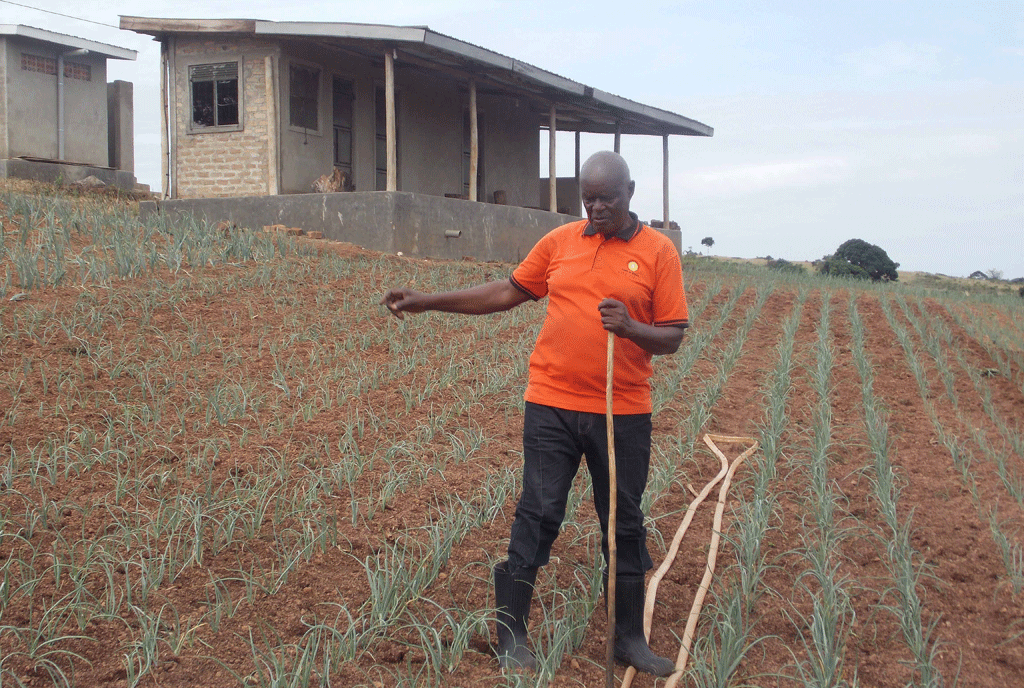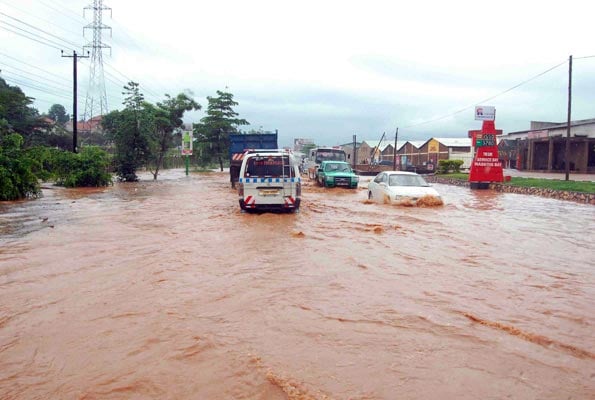Prime
Suitable crops for this short rainy season

Farmers can still take advantage of current rains to grow crops that take a short time to mature. PHOTO/FILE
What you need to know:
- Nobody is in a position to accurately tell when we will get reliable rainfall for farmers to begin planting crops, given that we live in times of climate change.
- Our form of agriculture, unfortunately, is mainly tied to rain seasons and we must plan everything with rain in mind.
For nearly three months most parts of Uganda have suffered unusual scarcity of rain. Many streams and swamps went dry due to rain shortage and the scorching sun as farmers saw their crops yellowing, shrinking, and dying. Livestock farmers have had extreme difficulty watering their animals and birds and many of them had to sell off their stocks cheaply due to insufficient pasture and feeds as a result of the devastating drought.
The long dry period has been mentioned as one of the factors that caused food shortages in areas such as Karamoja where lives have been lost according to some media reports and relief food donation is still ongoing.
However, in the past few weeks there have been incidents of heavy rainfall and ghastly floods in some parts of the country although there are still areas where rain is still unheard of.
Reliable rainfall
Nobody is in a position to accurately tell when we will get reliable rainfall for farmers to begin planting crops, given that we live in times of climate change. Our form of agriculture, unfortunately, is mainly tied to rain seasons and we must plan everything with rain in mind.
Gerald Ssendaula former Minister of Finance and now a prominent farmer has told Seeds of Gold in a conversation early this week, “These days I have to tread very carefully because the weather is so frightening and unpredictable. This would have been the time for example to apply fertilisers so that when it rains they would sink well into the soil. It would have been the time to dig holes in preparation for planting coffee and plantains. But nobody seems to know when it will really rain. And we do not have a reliable source of information about the weather.”
Standard planting
Charles Katabalwa, managing director, Agricultural Development Company Limited, who is also an expert in seed production, is of the view that farmers right now should practice what he refers to as “standard planting” by just planting at the earliest rainfall. “The rains are still erratic but normally rains begin after August 15 and tend to stabilise around mid or end of September,” says Katabalwa.
Quick maturing crops
“So farmers should begin planting and carry out some irrigation where this is possible as they wait for the rains to stabilise in September. Secondly the farmers should get their seeds from well recommended seed shops. There are some quick maturing and drought tolerant seeds. Since nobody is sure when the rains will stop the best advice is to plant as soon as possible and to plant the right seeds,” Katabalwa says.
National Agricultural Research Organisation (Naro) guidelines dictate that farmers should plant crops such as beans at the onset of rains. However for long rainy seasons planting may be delayed by two to three weeks to avoid too much rainfall during pod filling stage which may lead to rotting of pods and reduction in yields. Also according to Naro some bean varieties do not require too much water. Beans as a rule should be planted in rows to ease field operations such as inspection and fighting pests and harvesting.
Climate smart farming
Farmers must appreciate that climate change is in their face right now and that farming must be done more cautiously by seeking as much guidance as possible from their area agricultural services extension officers.
This will be particularly helpful with regard to identifying and purchasing drought tolerant seed varieties. Agriculturists also recommend that sorting and treating of seed are essential. Beans grow in nearly all soil types which are fertile, well drained soils with good aeration and free from conditions that interfere with germination and plant emergency.
Peter Wamboga from Science for Development at Naro, says farmers must begin practicing climate smart agriculture. “Apart from going for quick maturing and drought tolerant seeds farmers must dig holes and place tarpaulins or polythene sheets in them to trap rain water as soon as it starts raining,” he says.
“The better off ones should dig water dams well ahead of the rainy season so that in case the rains are short they have water reserves for irrigation.”
Fertilisers
Wamboga also told Seeds of Gold that it is very important for farmers to apply fertilisers to the soil after doing some soil testing in order for them to use the right fertilisers. “Experience has shown that in case of long droughts like in the case that we have gone through; the farmers who used fertilisers had better harvests than those who never did,” he says.
David Okello Kalule, who heads the Groundnut Improvement Programme at Naro, says, “Timely planting of the desired seed varieties which matches the season is essential. One should plant only when the soil has consistent moisture. Preferably seeds should be sourced from credible sources such as input shops, seed companies, and Naro.” Generally NARO guidelines regarding groundnut production dictate that certified seed of adopted varieties purchased from a reliable seed source should be used.
“In case of farmer saved seed it should be pure (true to type or unadulterated), graded (medium size), undamaged, fully developed and free from discolouration and fungal infection with a germination rate of above 90 percent. Several other factors must be considered when deciding on a variety. These include yield, resistance to major pests and diseases, farmer preferences like colour, growth habit, and maturity periods,” he adds.
Good land preparation is critical for maximum moisture retention, precision planting, fast uniform seed germination and emergence and effective weed and disease control. Land should be prepared early (six weeks before planting) before the rains start, so that sowing can take place early in the rains.
Coffee
For farmers planning to plant coffee this rainy season, it is important to source seedlings from well managed and licensed nurseries which are disease resistant, and grow quickly and with vigour.
By now all intending coffee farmers must have prepared the land by clearing all bushes and digging the holes (two feet by two feet) and covering them with top soil preferably well mixed with organic manure (two spades of cow dung per hole).
Spacing should be advised by the area agricultural services extension officers depending on whether the farmer wants to grow Arabica coffee or Robusta coffee. Coffee requires good amounts of water to grow well and it would be advisable for the farmer to dig large pits in the field fitted with tarpaulin sheets to trap rain water for irrigation in case the rains stop earlier than expected.
For sloping gardens it is also advisable to dig trenches for trapping runoff water so that sinks into the ground. It is further advisable to plant some wind breaks all along the boundaries of the coffee garden to prevent soil erosion by wind.
Climate smart farming
Farmers must appreciate that climate change is in their face right now and that farming must be done more cautiously by seeking as much guidance as possible from their area agricultural services extension officers.
This will be particularly helpful with regard to identifying and purchasing drought tolerant seed varieties. Agriculturists also recommend that




